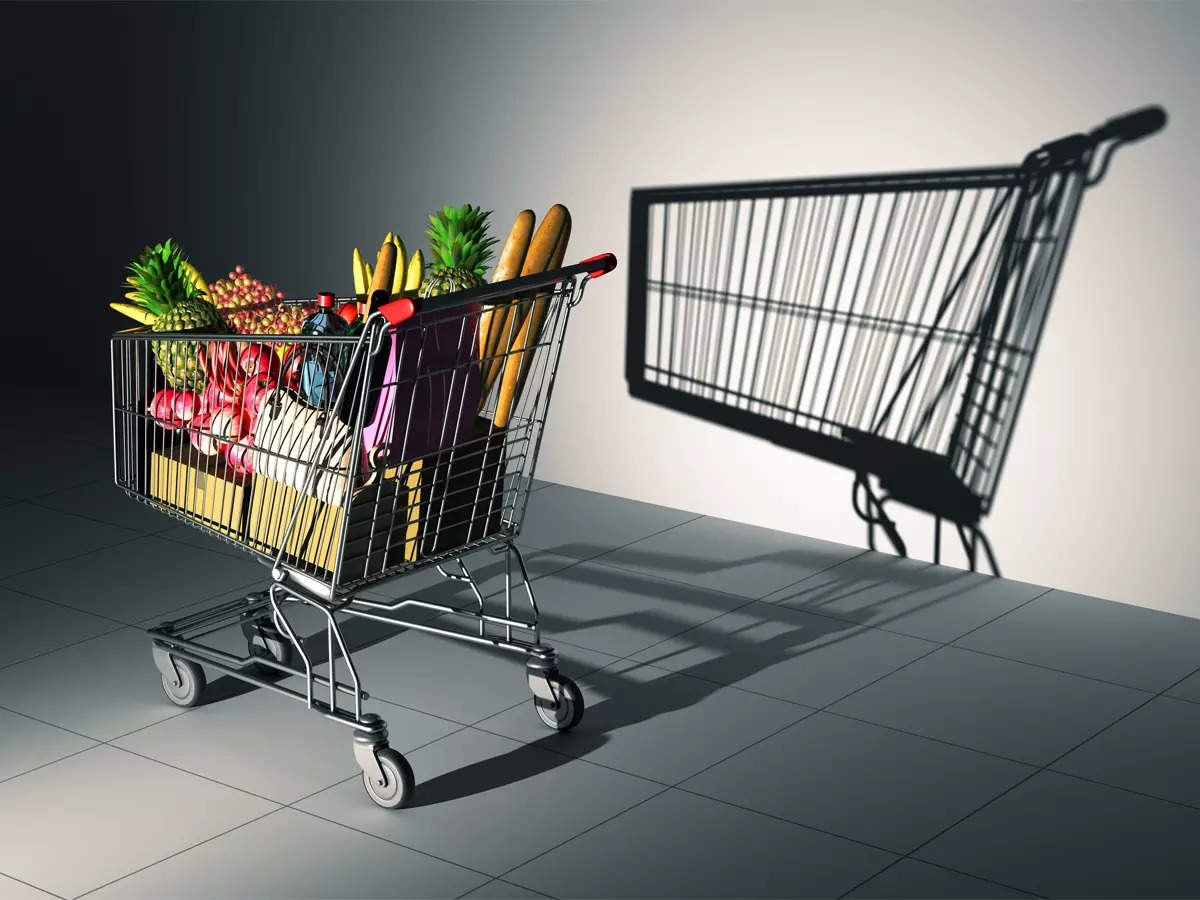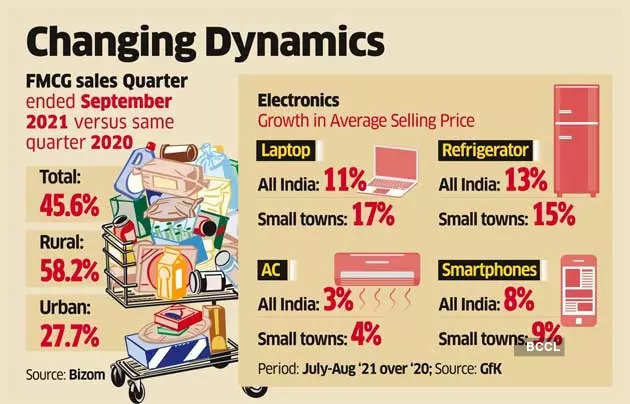
[ad_1]
 Small towns and villages outpaced cities and drove demand for consumer goods – from daily groceries to electronics – during the quarter gone by, helped by reverse migration and limited supply chain disruptions in the hinterland.
Small towns and villages outpaced cities and drove demand for consumer goods – from daily groceries to electronics – during the quarter gone by, helped by reverse migration and limited supply chain disruptions in the hinterland.
In the fast moving consumer goods market, rural consumption expanded 58 per cent year on year, twice the rate of urban consumption, which grew 28 per cent during the quarter ended September, according to the latest report by Bizom, a sales automation firm that transacts with 7.5 million retail stores. To be fair, the overall market has recovered sharply with the quarter seeing a 46 per cent growth in total sales by value.
Rural markets have grown faster in the past two years, underpinned by higher farm income, minimal retail disruption during the 2020 lockdown and migrant workers returning home. But villages saw a surge in infections during the second Covid wave earlier this year, which led to cities outpacing villages in June.
Urban market was less impacted due to increased sales through ecommerce, improved performance of modern trade and chemist outlets, coupled with limited closure of general trade outlets then.
“From a demand perspective, rural has been outperforming urban except for a short blip few months ago as they faced no supply chain issues. Also, while we saw a surge in infections in villages this time, consumers also turned towards packaged food after out of home consumption was constrained,” said Krishnarao Buddha, senior category head at Parle Products, India’s largest food company.
Rural markets are also resilient on the back of a strong kharif crop, good rabi sowing and good monsoon. To be fair, the overall market has recovered sharply with the quarter seeing a 46 per cent growth in total sales by value. The growth in rural markets was also driven by rise in kirana outlets that more than doubled compared to a year ago.
“In the last wave, we saw disruptions in supply and many kiranas shutting shop in this period, which led to a stronger focus on essentials. However, this time the key enabler for growth has been the strong presence of kirana outlets and increased people mobility that is fuelling higher growth across categories,” said Akshay D’Souza, chief of growth and insights at Mobisy Technologies, which owns Bizom.
Strong consumption recovery wasn’t just restricted to low-priced consumer goods. In July-August, small towns with a population between 1 and 5 lakh grew by over 8 per cent in terms of value across all consumer electronics and appliances as compared to 5 per cent growth at an all India level, market intelligence firm GfK India said.
“As we move into the festive period and beyond, we expect these markets to either maintain or increase their salience across categories. Premiumisation is driving the growth with average selling prices (ASP) growing faster than all-India,” said Nikhil Mathur, managing director – India at GfK, adding that the pandemic-led reverse migration has aided the growing prominence of these small towns across categories.
Sales growth of laptops in smaller towns has been 43 per cent compared to 30 per cent for overall category between July and August over same period last year. Also, the overall smartphone market declined 1 per cent but grew 2 per cent in smaller markets. Even in the washing machines segment, the overall market grew 3 per cent but smaller towns grew at twice the rate at 7 per cent.
Haier India president Eric Braganza said the impact of Covid and the second wave lockdown in smaller towns was much lower helping in faster recovery. Even the good monsoon will boost agricultural income whereby consumer sentiments are very bullish in small towns, he said.
[ad_2]
Source link

